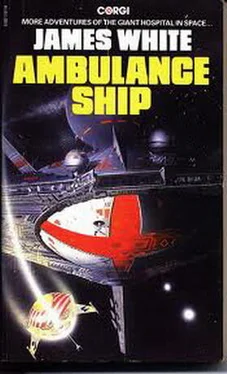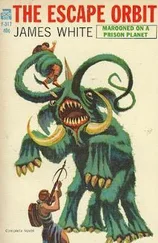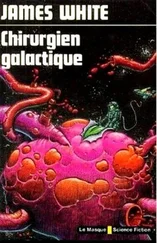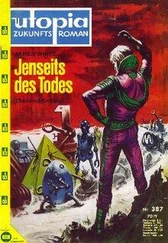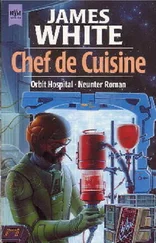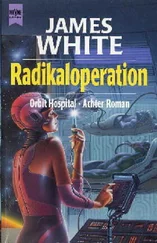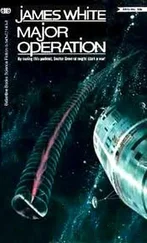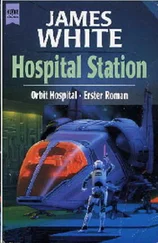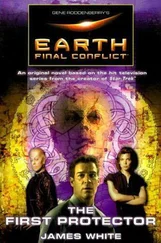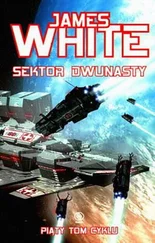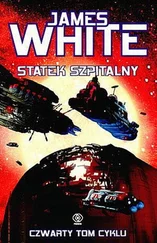“We can only hope that the Descartes gets the message in time,” he added grimly. “With the hospital standby reactor boosting the output of the Corps transmitter, if they don’t hear it they have to be deaf, dumb and blind.”
“Or very sick,” O’Mara observed quietly.
A long silence followed and was broken by the respectful voice of Captain Fletcher.
“If I might make a suggestion, Colonel,” he said, “we know the position of the wreckage and of the Descartes, if it is still at the disaster site and, very approximately, of the sector that is likely to contain the wrecked ship’s home planet. If a distress beacon is released in that area it is almost certain that it will come from the Descartes. The Rhabwar could answer it, not to give assistance but to warn off any other would-be rescuers.”
Obviously the Colonel had forgotten about the ambulance ship. “Are you still connected to the hospital by boarding tube, Captain?” he asked harshly.
“Not since the contamination alert,” Fletcher replied. “But if you approve the suggestion we’ll need power and consumables for an extended trip. Normally an ambulance ship is gone only for a couple of days at most.”
“Approved, and thank you, Captain,” said the Colonel. “Arrange for the material to be placed outside your airlock as soon as possible. Your men can load the stores on board later so as to avoid contact with hospital personnel.”
Conway had been dividing his attention between the conversation and the analyzer, which looked as if it was about to make a pronouncement. He looked up at the screen and protested: “Colonel, Captain, you can’t do that! If you take the Rhabwar away we lose Pathologist Murchison and the DBPK specimens, and remove any chance we have of quickly identifying and neutralizing this thing. She is the only pathologist here with first-hand experience of the life-form.”
The Colonel looked thoughtful for a moment. “That is a valid objection, Doctor, but consider. There is no dearth of pathologists here at the hospital to help you study the live specimen, even second-hand, and the DBPK cadavers on the Rhabwar are staying there. We can contain and, in time, devise some method of treating this disease at the hospital. But the Rhabwar could be instrumental in keeping the Descartes from infecting the warm-blooded oxygenbreathers of dozens of planets. The original order stands. The Rhabwar will refuel and replenish and stand by to answer the expected distress signal from the Descartes.
He had a lot more to say on the subject of probable future history, including the strong probability of having to place the DBPK patient’s home planet and off-world colonies in strict quarantine and to refuse all contact with the new species. The Federation would have to enforce this quarantine in its own defense, and the result might well lead to interstellar war. Then, abruptly, the sound cut out, although it was obvious that Colonel Skempton was still talking to someone off-screen-someone, it was obvious, who was objecting to the Rhabwar’s imminent departure as strongly as Conway had.
But the objector, or objectors, was a medical staff-member concerned with solving what was essentially a unique medical problem in extraterrestrial physiology or pharmacology, while Colonel Skempton, like the dedicated Monitor Corps policeman that he was, wanted only to protect a frighteningly large number of innocent bystanders from he knew not what.
Conway looked over at the image of O’Mara. “Sir, I agree that there is the most fearful danger of letting loose a virulent infection that could bring about the collapse of the Federation and cause the technology of many of its individual worlds to slide back into their particular dark ages. But before we react we must first know something about the threat we are reacting against. We must stop and think. Right now we are overreacting and not thinking at all. Could you speak to the Colonel sensibly, sir, and point out to him that a panic reaction frequently does more harm than—”
“Your colleagues are already doing that,” the Chief Psychologist replied dryly, “much more forcibly and persuasively than I could, so far without success. But if you feel that we are all guilty of a panic reaction, Doctor, perhaps you will demonstrate the kind of calm, logical reasoning that you think this problem demands?”
Why, you sarcastic … Conway raged silently. But before he could speak there was an interruption. Thornnastor’s analyzer was displaying bright, incomprehensible symbols on its screen and vocalizing its findings through the translator link.
Analysis of samples one through fifty-three taken in Observation Ward One, A UGL Level, it began tonelessly. General observations: All atmosphere samples contain oxygen, nitrogen and the usual trace elements in the normal proportions, also small quantities of carbon dioxide, water vapor and chlorine associated with the acceptable levels of leakage from the TLTU life-support system and the Illensan protective suit, and from the expired breaths of the DBDG, DBLF, ELNT, FGLI and FROB physiological types, as well as perspiration from the first, second and third of these types. Also present are the phenomes associated with the body odors of the species present who are not wearing overall body protection envelopes, including a hitherto unlisted set, which, by elimination, belongs to the DBPK patient. There are very small quantities of dusts, flakings and fibers abraded from walls, working surfaces and instruments. Some of this material cannot be analyzed without a larger sampling, but it is biochemically inert and harmless. There are also present follicles of Earth-human hair, Kelgian and DBPK fur, flakes of discarded Hudlar nutrient paint, and scales from Tralthan and Melfan tegument.
Conclusion: None of the gases, dusts, colloidal suspensions, bacteria or viruses found in these samples are harmful to any oxygen-breathing life-form.
Without realizing it Conway had been holding his breath, and the inside of his visor misted over briefly as he released it in a short, heavy sigh of disappointment. Nothing. The analyzer could not find anything harmful in the ward.
“I’m waiting, Doctor,” said O’Mara.
Conway looked slowly around the ward, at Thornnastor still undergoing artificial respiration, at the Kelgian theater nurse and the spread-eagled Melfan, at the silent Gilvesh and the TLTU hissing quietly in a corner, at the crowded pressure litter and at the beings of several different classifications attached to breathing masks-and found them all looking at him. He thought desperately: Something is loose in here. Something that did not show up in the samples or that the analyzer had classified as harmless anyway. Something that had been harmless, on board the Rhabwar …
Aloud, he said, “On the trip back to the hospital we examined and dissected several DBPK cadavers, and thoroughly examined and gave preliminary treatment to the survivor, without body protection and without suffering any ill effects. It is possible that the beings, Earth-human and otherwise, on the Rhabwar all had natural immunity, but that, to my mind, is stretching coincidence beyond its elastic limits. When the survivor was brought into the hospital, protection became necessary because four different physiological types practically dropped in their tracks. We have to ask ourselves, In what way were the circumstances aboard the ambulance ship and in the hospital different?
“We should also ask ourselves,” Conway went on, “the question Pathologist Murchison asked after completing her first DBPK dissection, which was, How did a weak, timid and obviously non-aggressive life-form like this one climb to the top of its planet’s evolutionary ladder and stay there long enough to develop a civilization capable of interstellar travel? The being is a herbivore. It does not even have the fingernails that are the evolutionary legacy of claws, and it appears to be completely defenseless.”
Читать дальше
